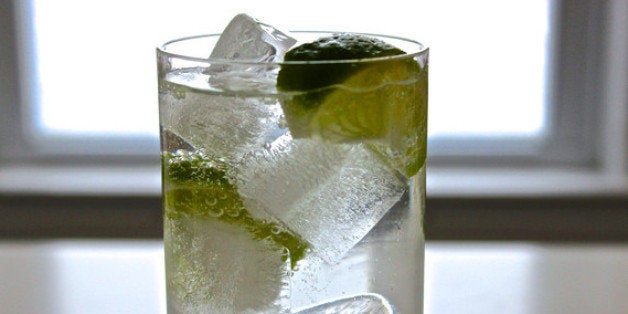
It may seem superfluous to write an article about making a gin and tonic. There are just two ingredients (three if you count the lime wedge) and it's one of the most common cocktails there is. But if you love them as much as I do, you don't want common, you want perfection.
The gin and tonic was conceived in the 19th century by the British as a way to stave off malaria during their occupation in India. It was believed that quinine, the key ingredient that gives tonic its bitter flavor, was an effective remedy for the disease (it's since been determined that it's effectiveness was a bit overstated, oh well). This isn't the first time the British military inadvertently created a classic cocktail. The gin gimlet was of result of the British Navy adding preserved lime juice to their gin ration to prevent scurvy.
On the surface, making a basic gin and tonic is as easy as cocktails get. No shaking, no stirring, you're just pouring stuff into a glass. And I mean, the name literally is the recipe. But it's surprisingly easy to screw it up. Most of us have had the displeasure of drinking a terrible gin and tonic, not fun.
To make a great one isn't hard. It just requires a little attention to detail. Here my keys to the perfect gin and tonic:
Good Gin and Good Tonic
With just two components, there's no where to hide. For gin go with any solid London Dry gin that's a little higher proof, with that strong trade-mark juniper flavor. Tanqueray is my go to. I also like Beefeater. For tonic, if you can find it, Fever Tree is the best. Clean, crisp and perfectly balanced between sweet and bitter. Look for it in specialty food stores. If that's not an option, Canada Dry or Schwepps are just fine.
Measure
The balance of gin to tonic is important. This is where many g&ts go awry. If there's too much gin the cocktail is way too strong, too little, and it tastes like you're drinking soda. The sweet spot is 2 ounces gin to 4/5 ounces tonic. The size of the glass and the amount of ice will effect the volume of the drink too. 10-12 oz collins or highball glasses are ideal, but work with what you have.
Small, Freshly Opened Bottles of Tonic
The tonic should be at its most carbonated so using a newly opened bottle is ideal. Those large bottles go flat quickly, so avoid them unless you'll be making a lot at once. The smaller twelve ounce six packs are little pricier, but well worth it.
Get everything Cold
The glasses, the tonic, even the gin. You can keep the gin in the freezer (that's just for g&ts, any other cocktail should be made with room temperature gin) or jigger the gin into the glasses and put them in the freezer 15-20 minutes before you mix the drinks.
Use Two Limes Wedges
Both squeezed in. The first after the gin, the second after the tonic.
The Perfect Gin and Tonic
2 oz gin
4-5 oz tonic
2 lime wedges
Method
In a frozen collins glass, add the gin.
Fill the glass with ice, the larger the cubes are the better.
Squeeze in one of the lime wedges.
Add the tonic.
Squeeze in the second lime wedge, briefly stir.
Put you feet up, and drink.
You can apply this method of using quality, cold, carbonated and balanced ingredients to any highball cocktail: rum and coke, whiskey and ginger, dark and stormy, what have you. These two-ingredient drinks may seem like no-brainers, but a little scrupulousness goes a long way. Believe me, you'll taste the difference. Cheers!